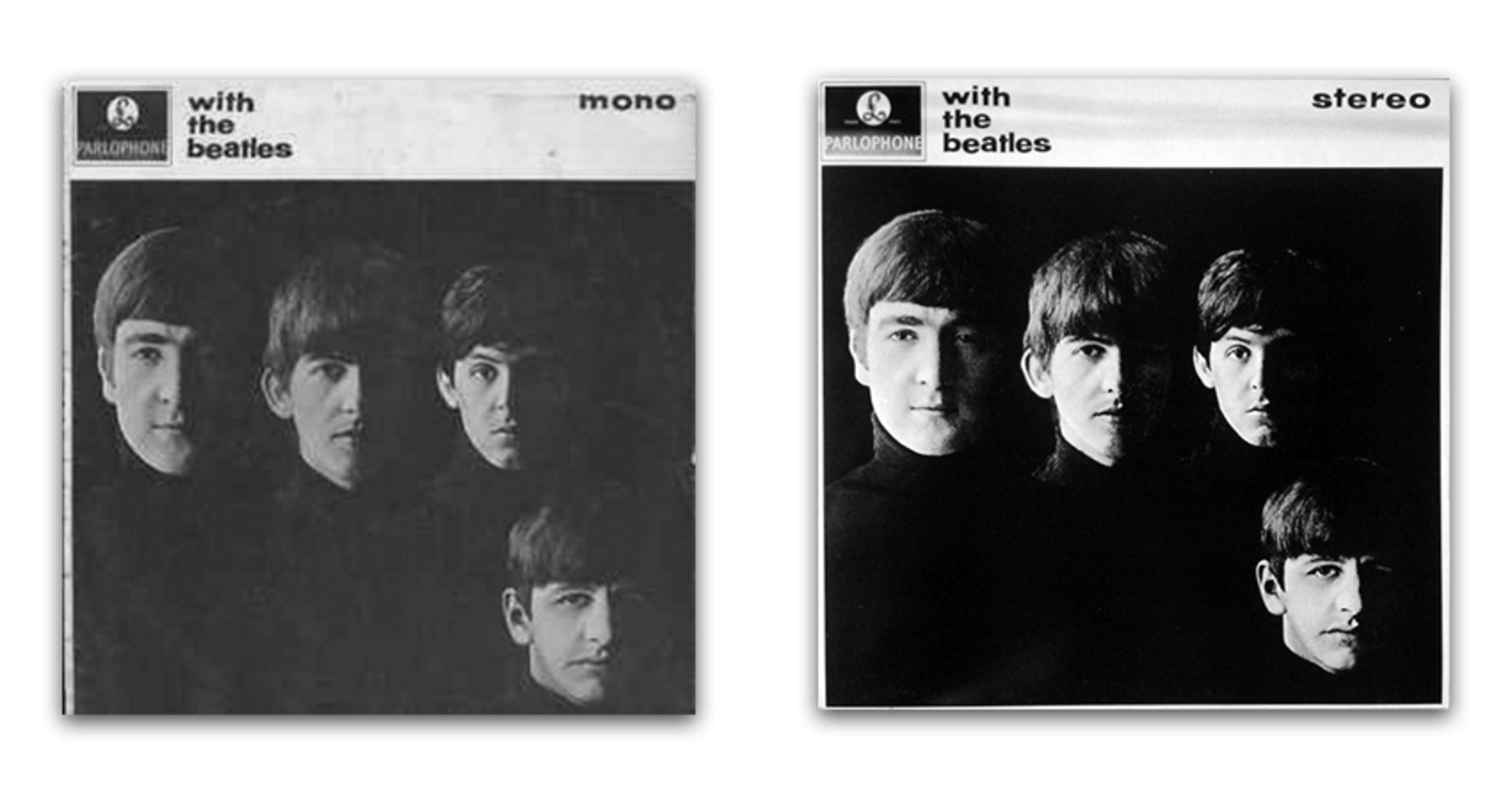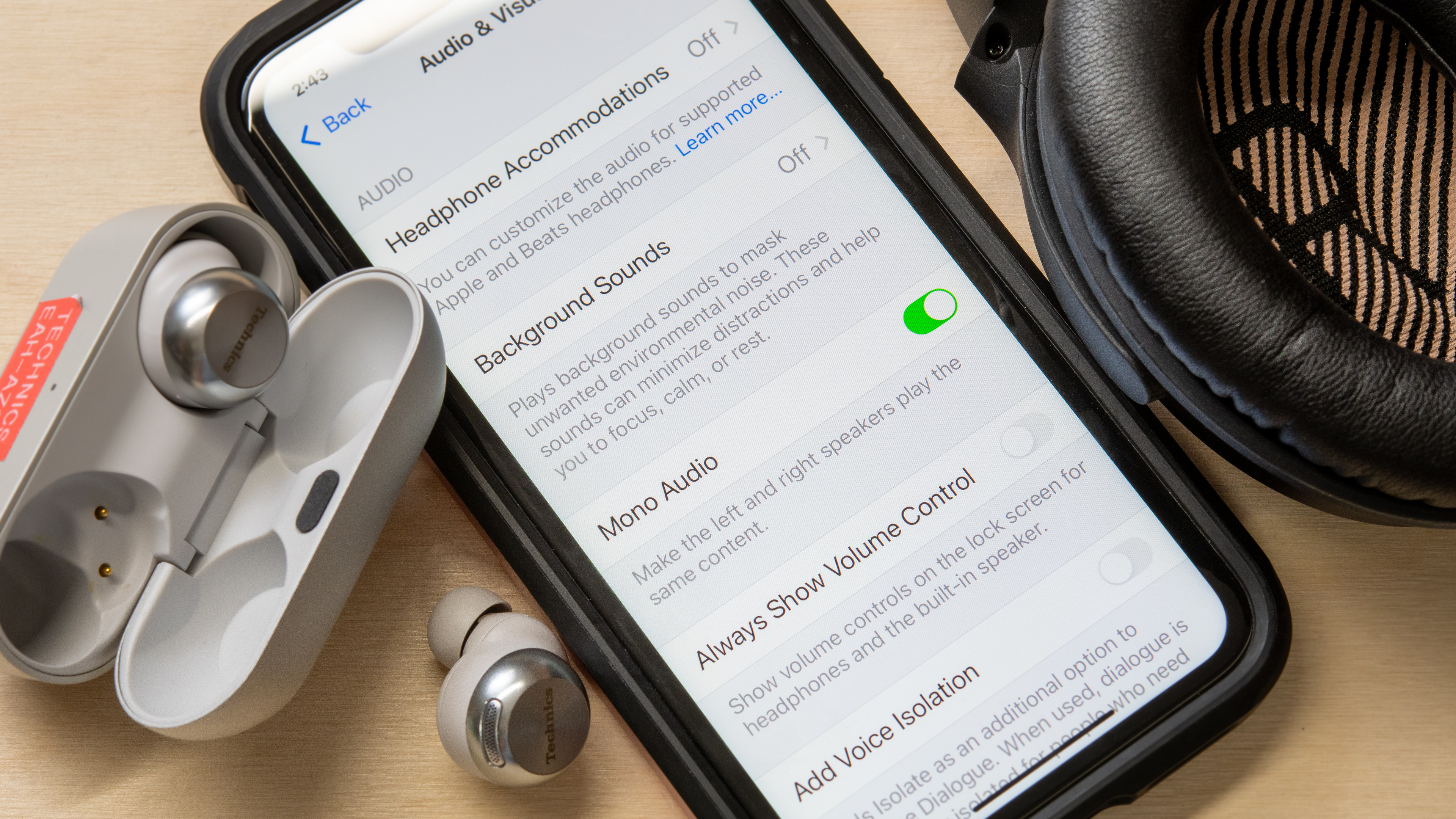Have you ever felt like your audio is missing something? That lingering feeling that a certain horn part should be coming more clearly from the right-hand side of the mix? It's very possible that you've accidentally set your audio to output in mono. That's okay, though: you're in good company.



These posts were made within the headphones subreddit over the last few years, demonstrating that this issue might be more widespread than we think. In an age where our headphones (especially the wireless variety with companion apps) are becoming increasingly more customizable, it's all too easy to flip the wrong switch and say goodbye to life in stereo. If you're one of these users, then you'll want to check out our solutions further down.
But what exactly is mono audio? And if it's truly that undesirable to listen to, then why does every app or media player have a mono option? This article takes you through the theory, history, and many applications of mono audio.
What is Mono Audio?
Monophonic audio (frequently shortened to 'mono') is intended to sound as if it were coming from a single fixed location in space. All playback is confined to a single channel, with all the audio channels mixed together with the intention of playing through this one channel. This often means playback comes from a single speaker, though it could also be multiple speakers reproducing the same signal. Or, as the Apple accessibility settings put it, mono "makes the left and right speakers play the same content." Sounds simple enough, right?
Often, the best way to understand mono audio is in contrast to stereo audio. Stereo audio utilizes two audio channels, which usually represent the left and right channels. With a stereo track, these channels are entirely different audio signals that, when heard together, can more accurately mimic how we naturally hear sound. Given that most people can hear with both ears and sound can come from different directions, stereo is preferred over mono for the more realistic and immersive way in which it's able to present sound. Regardless of whether you're listening to music, watching a movie, or even enjoying your favorite concert DVD, stereo audio can enhance your experience by introducing a spatial aspect to sound.
A Brief History of Mono Audio
While stereo is the current standard for recorded music, this wasn't always the case. It wasn't until the second half of the 20th century that stereo music became commonplace, with most audio technology employing monoaural sound. Before this, the phonograph of Thomas Edison's day, early gramophone records, AM radio, and even some FM radio utilized mono sound.
While early forms of stereo can be traced back to the late 19th century, the commercial availability of stereo records in the late 1950s and early 1960s can be seen as the watershed moment in stereo's adoption. Major labels, like RCA and Decca, issued popular records of the era in stereo, cementing it as the new standard. As a result, the catalogs of popular artists of the era, like The Beatles and The Beach Boys, are bisected by the emergence of stereo sound. Their early recordings are in mono, while later releases came out in stereo. This change brought about all sorts of changes in both the recording and mixing of audio. While mono recordings were often recorded in similar ways to early stereo recordings (using multiple mics fed into a mixing board), they were combined into a single, unified track at the mixing stage, which sounds like it's coming from a single, fixed point in the soundstage when you're listening.

The transition period between mono and stereo audio even led to some strange conventions in the mixing of music, some of which can still be heard today. Engineers struggled to adapt to this new technology after years of mono mixdowns, and consumers had to purchase new equipment to be able to play back stereo recordings. As a result, recordings of this era often feature strange panning choices (panning refers to the positioning of sonic elements within the stereo field, from left to right). You'll often hear the drum kit panned to the extreme right or left of a '60s recording, while most modern recordings favor a more central placement in the mix. Mixing engineers at the time simply didn't know where to place things within the mix to sound natural. Consumer stereo sound systems also usually featured two, closely aligned speakers that wouldn't allow for much separation between left and right anyway.
These days, despite stereo remaining a popular format, it faces increasing competition from spatial audio formats that leverage modern technology to create an even more immersive experience. This is particularly evident in the home theater space, with popular formats like Dolby Atmos and DTS:X that can localize the sound further across multiple speakers. In the world of headphones, most modern wireless headphones and earbuds will feature some kind of spatial audio feature too, which virtually models a larger soundstage.
How to Identify Mono Audio
So, back to that sinking feeling in your stomach as you come clean to the Reddit headphones community. How could you have been listening in mono for so long without realizing? If stereo technology has been around since the '50s, shouldn't it be obvious? Well, you can hear this for yourself.
In the following audio examples, you can hear two clips that have been converted to both mono and stereo. The first features a single synthesizer drone that oscillates from left to right throughout the clip. If you listen to this on headphones, you should be able to clearly hear the synth bouncing between the left and right in the stereo version, while the mono version stays fixed in one place. Similarly, the second clip features some "60s-style" panning, where the drums are panned entirely to the right and the bass entirely to the left. In the stereo version, this split between the two channels is very obvious and somewhat disorienting, as we're not used to hearing these rhythm instruments panned so widely. In the mono version, the bass and drums are dead center, creating a more coherent groove. This example helps illustrate why some vinyl collectors and enthusiasts sometimes prefer the mono version of albums from this period.
You can also often differentiate between mono and stereo audio by looking at the waveform. The two waveforms in this example are visually very different: the stereo version features two distinct channels (the drums on the right and the bass on the left), while the mono version looks much more uniform. The mono version of the waveform is effectively what you get if you overlay the left stereo channel on top of the right channel, 'summing' them into two identical mono channels.
How to Enable and Disable Mono Audio
Now we've identified the problem, it's time to look at the solutions. Generally speaking, the ability to toggle between mono and stereo audio tends to be located in the accessibility settings of your device. Why? Because mono audio can be a great tool for those with hearing impairments (along with many other great reasons). More on this later, but for the time being, this helps us identify where to find this potentially game-changing setting.

For iOS users:
- Click on 'Accessibility'
- Click on 'Audio and Visual'
- Make sure 'Mono Audio' is disabled
For Android users:
- Navigate to 'Accessibility'
- Head to 'Audio adjustment'
- You'll see a toggleable mono audio option
For macOS users:
- Click on 'Accessibility'
- Click on 'Audio'
- Deselect 'Play stereo audio as mono'
For Windows users:
- Head to 'Settings'
- Go to 'Ease of Access'
- Go into 'Audio'
- Toggle the 'Turn on mono audio' button.
For the hard-of-hearing
Perhaps the most important application for mono audio is to allow those who are hard of hearing to fully enjoy their audio content. Often, those with hearing loss or cochlear implants are able to hear only monoaurally, with one ear more capable of hearing than the other. As we discussed earlier, stereo sound splits the audio into two different signals. So if you're listening with two earbuds, for example, you'll get different audio in each earbud. So if you're unable to hear (or hear clearly) in one ear, you'll receive a very lopsided version of the track that might even be missing certain elements.
As a mixing/audio engineering tool
While all music was once mixed and produced in mono, it might seem like there's little need for it in a day when stereo and surround formats reign supreme. However, you might be surprised to know that mono still has its place in the pro audio world. It's conventional wisdom to always check your mixes in mono, with the idea being that if it sounds good in mono, it'll likely sound good in stereo too. Stereo panning also opens up the potential for phase cancellations to occur when played back on speakers, which will weaken certain instruments in mono playback.
Mono playback is also more commonplace than you might think. While even most phone speakers are now capable of stereo playback, environments like nightclubs will often mix tracks down to mono audio to ensure everyone hears the same thing, regardless of where they're dancing. The last thing you want is for that gorgeous shaker that ties the groove together to be inaudible in the club. Furthermore, many portable Bluetooth speakers are only capable of playing back mono audio.
To hear mono recordings as intended
We briefly touched on the history of mono recordings earlier, as well as the growing pains associated with the switch to mono. During the transitional era of the 1950s/1960s, many albums were initially released as mono versions and then reissued in stereo. As a result, many artists recorded with a view to releasing their music in mono, so it can be argued that the mono version gets closer to the artist's original intention. Nowadays, you can do this with a flick of a virtual slider, without fretting about spending large sums of money on the mono and stereo versions of your favorite Beatles LPs.

For when everyone needs to hear the exact same audio
As highlighted above, clubs are a good example of when everyone needs to hear the same thing, as there are folks dancing and weaving their way around. Similarly, multi-room speaker setups will often be configured to play back mono audio only, so people in different rooms will hear the same thing. Finally, if you're watching a movie with a friend and only have one pair of earbuds, switching to mono audio can be the best move. Classic back-of-the-bus antics.
Conclusion
Next time you listen to a track and find that it's lacking a certain 'Je ne sais quoi,' it might be worth checking your device's accessibility settings to see if you've accidentally enabled mono audio. It's very possible that the 'quoi' is actually the spatial quality of your audio. Of course, mono audio has its applications: it's a godsend for DJs, record collectors, and the hearing impaired. But for most of us, it may just elicit the question of 'Why does my audio suck?'. Our ears are incredibly adaptive, though, so if you're not careful, you may end up listening in mono for a decade without realizing.


